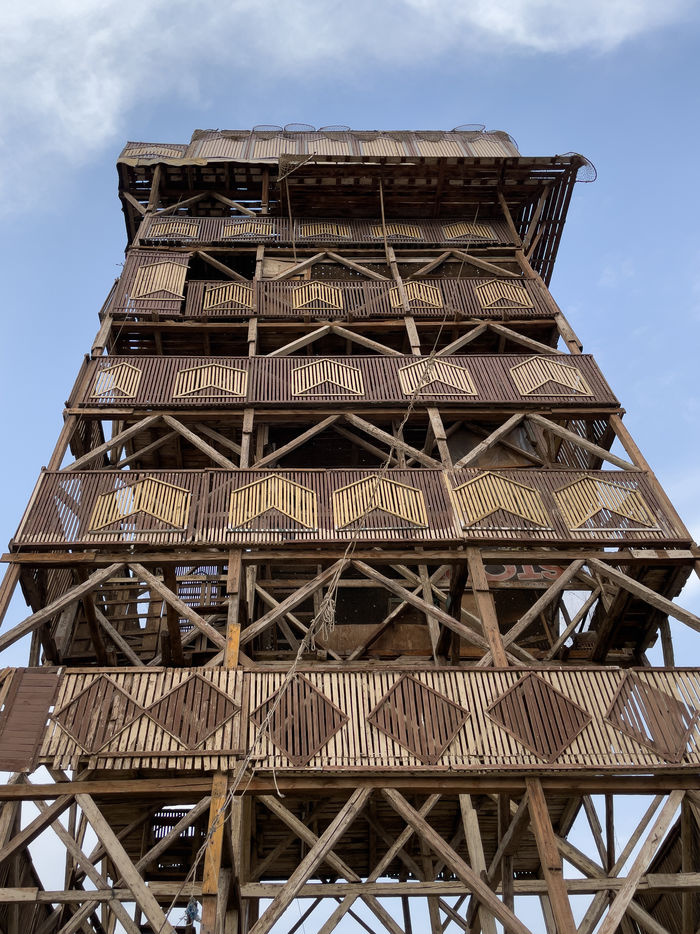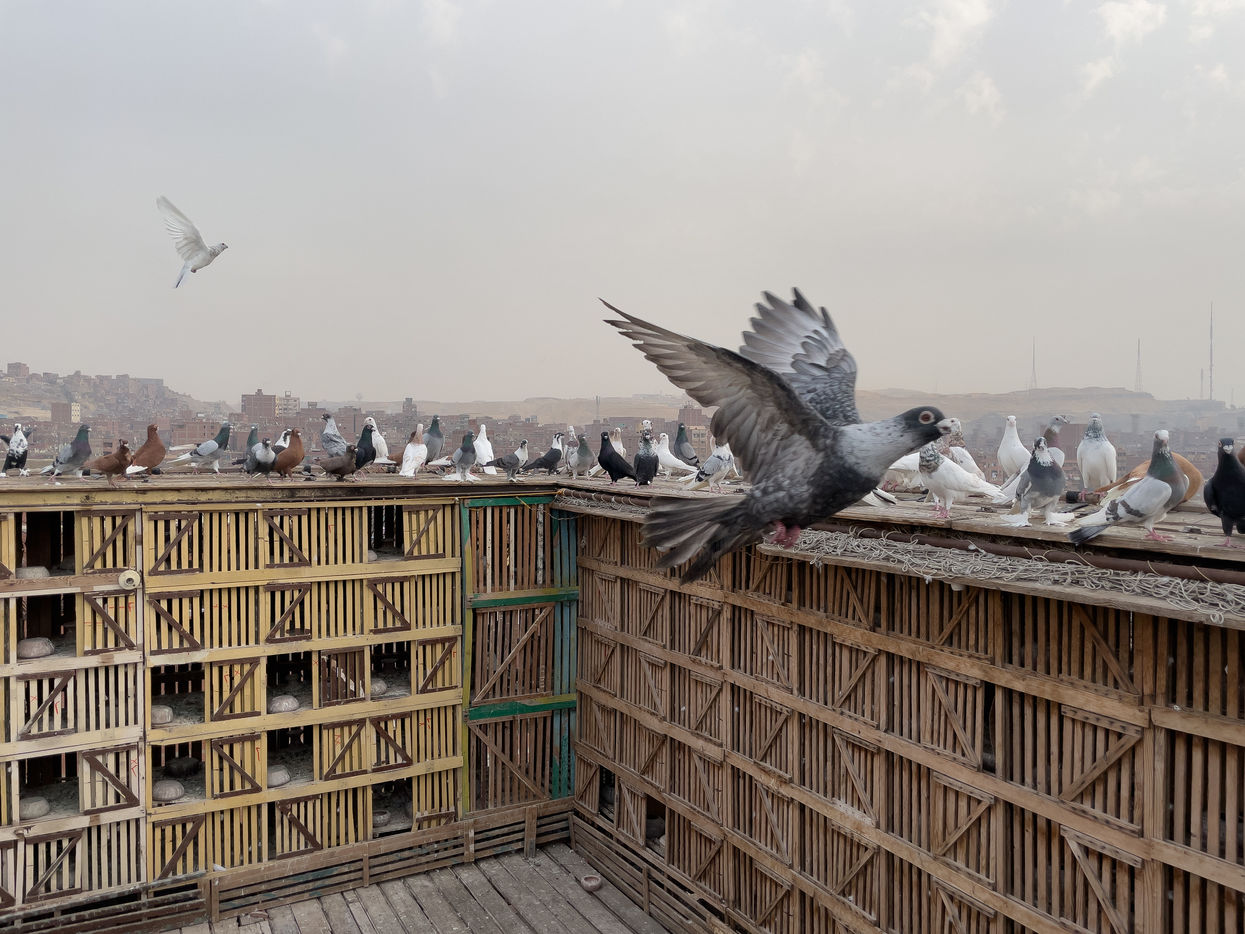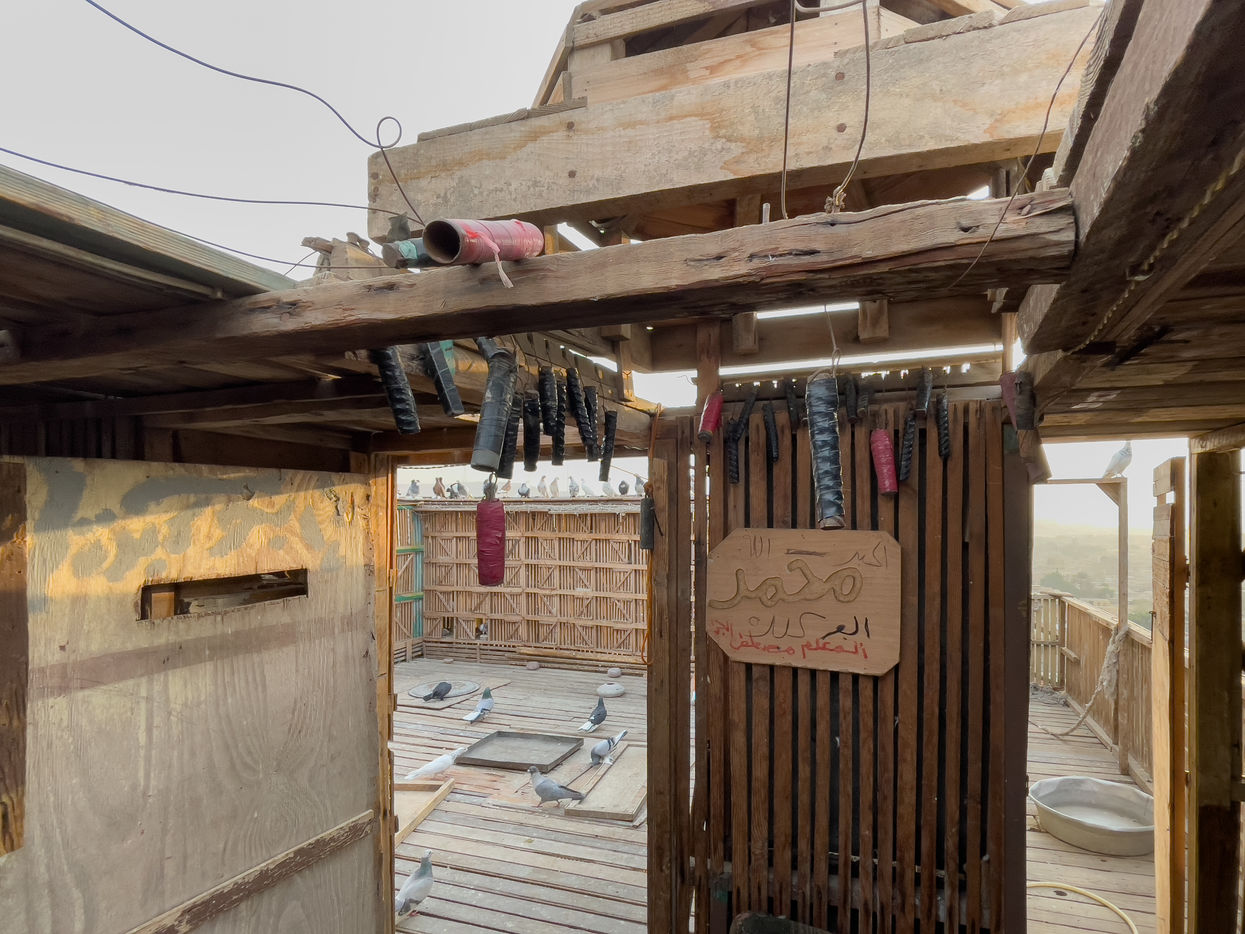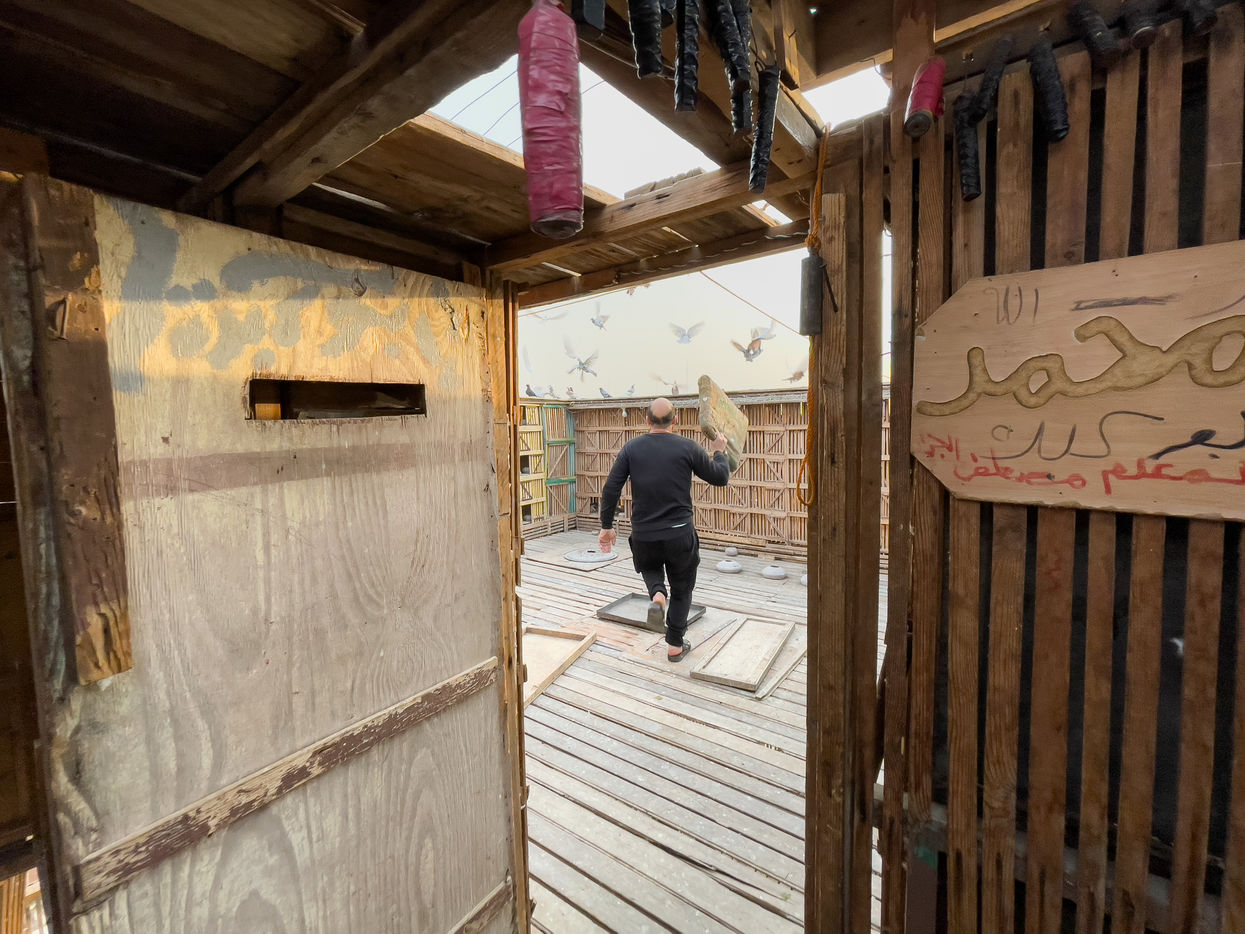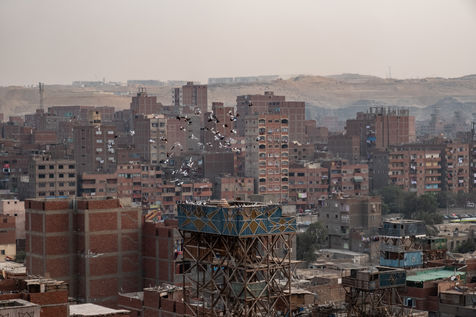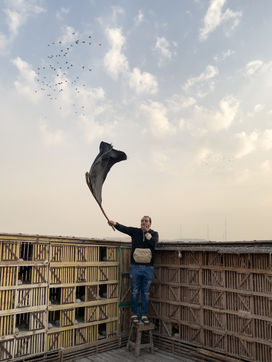Les pigeonniers égyptiens
Quand il était enfant, Hussein s?est intéressé aux pigeons en les voyant voler : il s?est renseigné, puis il s?est lancé, cela fait 25 ans maintenant. Il a appris à les élever tout seul et il en a plus de 200 aujourd?hui, qui ont tous un prénom !
Son pigeonnier en bois, construit sur un immeuble de 5-6 étages dans la cité des morts, fait 19m de hauteur ? mais il a commencé avec un étage, avant de monter au fur et à mesure. La hauteur est très importante dans ce métier, car elle permet d?attraper plus de pigeons, et évite d?en perdre trop aussi.
Il est assisté par Mohamed. Depuis 20 ans ils forment une équipe. Ce dernier habite en face de chez lui, il est boucher le matin, et kebabier le soir.
Hussein est boucher aussi, mais il est propriétaire de son commerce. Il a un fils mais ce dernier ne veut pas prendre sa relève. Quant à ses filles, « ce n?est pas une paassion pour elles ». La relève ne viendra pas de côté-ci. Mais de son neveu, Ahmed (13 ans), lui aussi passionné par les pigeons, et qui a commencé son apprentissage.
Les deux hommes ne travaillent au pigeonnier que le lundi (4 à 5h) et maximum 2h les autres jours ; ils viennent ensemble, chacun à une tâche spécifique. Ils libèrent les pigeons deux fois par jour, à 7h le matin, et le soir. Ils parlent aux pigeons en sifflant.
Hussein, Mohamed et les autres éleveurs se considèrent comme des coachs. Les deux hommes ne participent plus aux compétitions inter quartier, ils préfèrent rivaliser avec les éleveurs de leur quartier, l?objectif étant de gagner le match avec leur équipe de pigeons. C?est principalement cet esprit de compétition qui les anime.
Ils s?amusent avec les pigeons : ils les font fuir pour qu?ils tournent autour du pigeonnier pour attirer les autres pigeons pour les attraper, puis les revendre. Ils estiment en gagner entre 5 et 15 par mois, et en perdre tout autant.
Assis parmi eux au moment de les nourrir, partageant avec eux un peu de thé, le soir venu ils dissertent tout en observant leurs oiseaux, entourés de leurs enfants venus leur rendre visite à la sortie de l?école.
Egyptian Pigeon Houses
When he was a child, Hussein became interested in pigeons when he saw them flying: he asked around, then took the plunge, 25 years ago now. He learned to raise them on his own, and now has over 200 of them, all with their own names!
His wooden loft, built on top of a 5-6 storey building in the Cité des Morts, is 19m high - but he started with one storey, and gradually built his way up. Height is very important in this business, as it enables more pigeons to be caught, and prevents too many from being lost.
He is assisted by Mohamed. They've been a team for 20 years. Mohamed lives across the street from him and is a butcher in the morning and a kebabier in the evening.
Hussein is also a butcher, but he owns his own business. He has a son, but he doesn't want to take over. As for his daughters, "it's not a passion for them". Succession won't come from this side. It will come from his nephew, Ahmed (13), who also has a passion for pigeons, and has begun his apprenticeship.
The two men only work at the loft on Mondays (4 to 5 hours) and a maximum of 2 hours on other days; they come together, each with a specific task. They release the pigeons twice a day, at 7 a.m. and in the evening. They talk to the pigeons by whistling.
Hussein, Mohamed and the other breeders see themselves as coaches. The two men no longer take part in inter-neighborhood competitions, preferring to compete with the breeders in their neighborhood, the aim being to win the match with their team of pigeons. It's this competitive spirit that drives them.
They have fun with the pigeons: they scare them into circling the loft to attract other pigeons to catch them, then sell them. They reckon they make between 5 and 15 a month, and lose just as many.
Sitting with them as they feed, sharing a cup of tea with them, and in the evenings, they talk while observing their birds, surrounded by their children who have come to visit them after school.


